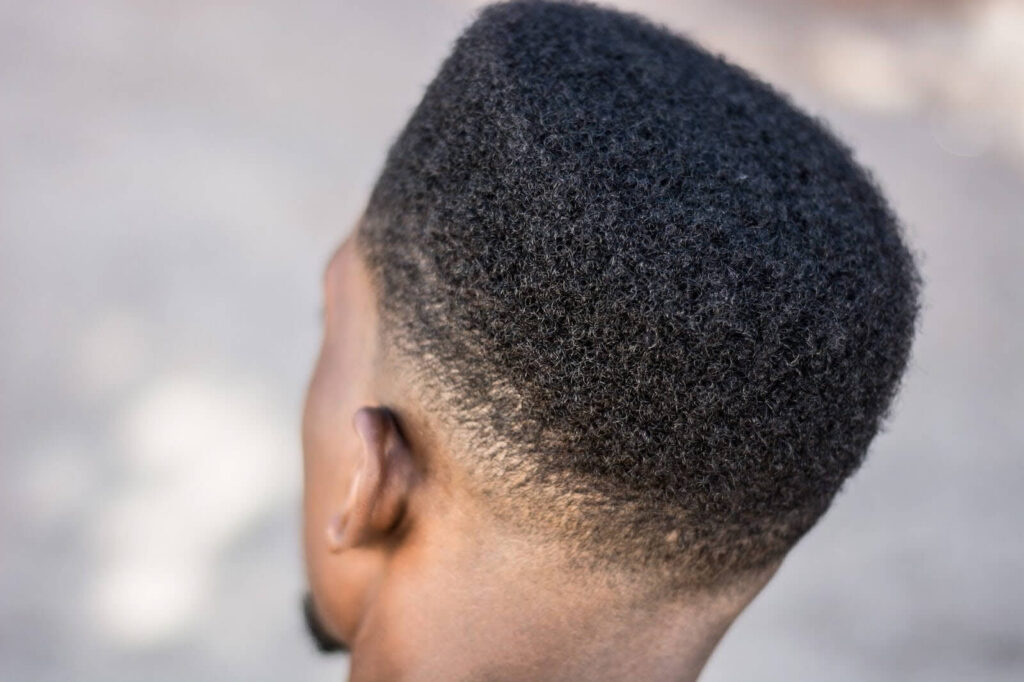Hair loss can be a deeply personal and often frustrating experience. For many, it’s more than just a cosmetic concern; it can impact self-esteem and confidence. However, the fear of thinning hair or a patchy beard often matches fears about the actual hair transplant. Will it look obvious? Does a hair transplant leave scars? Will I like it? It’s common to battle with these questions as you research and consider hair transplant procedures. Fortunately, the follicular unit extraction (FUE) hair transplantation procedure offers hope. Nashville Hair Doctor is a Tennessee-based hair restoration center servicing patients from all over the Southeast and the nation. Our master technicians are equipped with best practices to ensure you have a quality hair transplant experience. For those with lingering concerns about hair transplant scars, it is possible to address or even remove them! Read on to learn more.
What to Do About Hair Transplant Scars
Understanding Hair Transplant Scars
Hair transplant scars, a lingering concern for many individuals considering hair restoration, can result from various factors. These factors include the surgical technique, genetic predisposition, and skin type. While the degree of scarring may vary from person to person, it’s important to know that not all hair transplant procedures leave noticeable scars. The key lies in choosing the right method and clinic.
At Nashville Hair Doctor, we specialize in the FUE hair transplant procedure, which is a technique that does not leave any linear scars, making this an ideal choice for those worried about post-surgery scarring. View our hair transplant before and after photos to see real-life results and success stories from our satisfied clients.
Treatments for Addressing Hair Transplant Scars
According to the National Library of Medicine, hair transplant scars are rare but often happen with a restoration procedure other than the FUE hair transplant. Effective treatments are available if you’re already dealing with hair transplant scars. Let’s explore some of the options:
- Topical Serums and Creams: Over-the-counter or prescription serums and creams can help reduce the appearance of scars. These products often contain silicone, which can soften and flatten scar tissue.
- Laser or Light Therapy: Laser therapy can stimulate collagen production and promote skin healing, reducing the appearance of scars over time. It’s a non-invasive option that many find effective.
- Microneedling: This minimally invasive procedure uses a device with fine needles, creating controlled skin micro-injuries. It can help break down scar tissue and improve skin texture.
It’s important to note that each treatment option comes with its own set of possible side effects and risks. Therefore, it’s crucial to consult with a qualified dermatologist or medical professional to determine the right course of action for your specific needs. At Nashville Hair Doctor, our hair transplant consultants can provide guidance and recommendations tailored to your unique situation.
Exploring Alternative Treatments
If you prefer natural or alternative remedies to your hair transplant scar removal, there are several options worth considering:
- Massage: Gentle massage of the scarred area can help break down collagen fibers and improve blood flow, potentially reducing the appearance of scars.
- Aromatherapy: Some essential oils, like lavender and rosehip, are believed to have scar-reducing properties. Dilute them with a carrier oil and apply them to your scars regularly.
- Acupuncture: Acupuncture may help stimulate the body’s natural healing processes and improve the appearance of scars. Be sure to consult with a licensed practitioner.
While these natural remedies may not offer guaranteed results, they are worth exploring in conjunction with other treatments for scar reduction.
Post-Treatment Aftercare Is Vital
Regardless of your hair restoration treatment, following post-treatment aftercare instructions is crucial for achieving optimal results. Your dermatologist or specialist will guide you on caring for your scar tissue as it heals. Adhering to these instructions will enhance the treatment’s effectiveness and minimize the risk of complications.
FUE Hair Transplant for Superior Results
At Nashville Hair Doctor, we specialize in follicular unit extraction (FUE) using the NeoGraft® method. This advanced approach employs pneumatic pressure to harvest hair grafts from the donor area, typically at the back of the head. These grafts, each containing multiple hair follicles, are then meticulously transplanted into the balding areas using a minimally invasive pinprick technique.
The FUE hair restoration technique is versatile and suitable for all hair types, including fine, coarse, Asian, and African hair. Moreover, it does not require shaving the entire head and leaves no linear scar.
Does a Hair Transplant Scar Ever Go Away?
While a linear scar resulting from a FUT transplant won’t entirely go away, there are ways of hiding it. The master technicians at Nashville Hair Doctor may be able to graft hair follicles into the FUT scar using the FUE method. However, the success of this treatment depends on the scar’s thickness, and it’s important to note that scarred skin does not always retain grafts as effectively as healthy skin. After you submit your free quote request, along with photos of your hair, our consultant will contact you within one business day to assess the suitability of this procedure for your specific situation.
Hair transplant scars are a concern that many individuals face, but they don’t need to be. Understanding the causes, exploring treatment options, and consulting with a qualified professional are essential steps in addressing this issue. At Nashville Hair Doctor, we offer the FUE hair transplantation procedure, which is a reliable way to restore your hairline without worrying about conspicuous scars. Our track record of success and dedication to our clients’ satisfaction speak for themselves.
Don’t let hair transplant scars hold you back any longer. Contact Nashville Hair Doctor today and embark on your journey to hair restoration with confidence. If you’re ready to take the next step towards a scar-free future, we invite you to contact us for a free quote. Together, we can help you regain your confidence and achieve the hair you’ve always wanted. Your dream of a scar-free, fuller head of hair is within reach, and we’re here to make it a reality.

